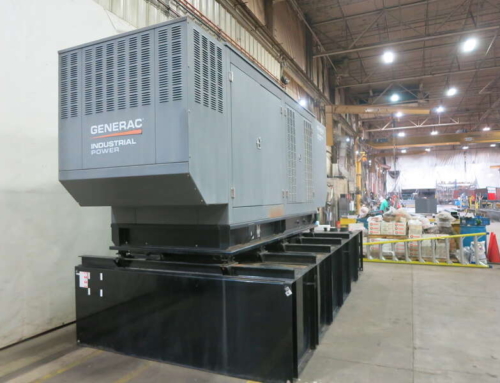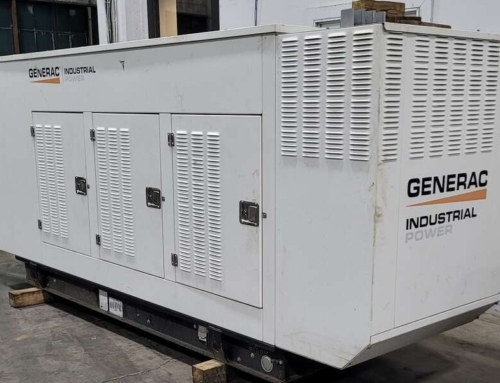Industrial and commercial generators are usually huge and heavy and they require proper installation to be able to function without any glitches. One of the most important aspects of installing a generator is generator concrete pads, a specially designed and developed pad that enables the generator to sit up, away from the mud, gravel beds, and dirt. It is often used as a foundation for a generator, designed specifically to keep the size, shape, footprint, and weight of your generator. Generator concrete pads are extremely important additions to industrial and commercial generators because these generators are often required to produce huge loads and work for longer hours, and if they are not installed on a concrete pad, they could face severe challenges, including:
- Insufficient space for generator installation
- Inadequate spacing to access the generator for maintenance and cleaning
- Pad overloading can lead to cracking
- It is a legal requirement, so not having a concrete pad would mean non-compliance with regulatory issues
- It can also attract fines and shut down of the generator
Something that not only impacts the performance of the power generator but also has legal implications must be taken seriously. You must plan the building of the concrete pad properly in accordance with the building codes of your area and ensure that it fulfills the requirements that it is supposed to deliver.
How to Plan Concrete Generator Pad?
Your choice of a concrete pad will vary depending on the size, shape, footprint, and weight of your generator. So, once you have finalized the kind of generator you wish to install on your premises, you can get down to planning for the concrete pad. Start with planning for the concrete foundation layout. Your concrete pad must be of the highest quality that is adapted to the new generator you wish to install.
As the concrete generator pad provides a stable concrete frame and foundation for the generator, the construction of it must be handled with utmost care and you should ensure that the thickness of the pad is just right. To ensure this, you can ask your installer to round the edges with an edging trowel. You should also make sure that the poured concrete is cured for several days before you instal the generator. This is to ensure that the generator pad doesn’t crack when the machine is in its operational high.
The thickness of your concrete pad will decide how well your generator performs. If the pad is too thick or too thin, it faces a higher possibility of cracking, damaging your generator. This not only means heavy financial losses but also legal and regulatory issues as generator pads are a matter of all code compliance.
Account for generator set vibrations
Heavy generators create a lot of vibrations when they operate. To absorb these vibrations and protect them from reaching your facility and damaging other equipment and disturbing the employees, your concrete generator pad must have vibration isolators. This must be ensured when the concrete pad is being developed. Calculate the exact amount of vibrations that your generator will produce when at the peak of its operations and install the right kind of vibration isolators in the concrete pad.
The vibrations produced by the generators are caused by various reasons that also include combustion forces and torque reactions, to name a few. These vibrations not only produce undesirable noise but can also cause damage to the generator set. To ensure that your concrete pad has the right kind of vibration isolators, it is important to understand the vibrations produced by the generator. These are:
- Torsion: These kinds of vibrations occur when combustion forces from the crankshaft transmit to the rotating mass.
- Linear: These vibrations are a result of shaking or loosely fitted machines that cause noisy vibrations and rattling.
To ensure that the vibrations don’t cause any damage to the generator and disrupt its operations, you can choose from the following vibration isolators:
- Bulk isolators: These are usually a little bulkier and costlier and they can be installed by mounting the generator on a block that is surrounded by fiberglass or cork, thus isolating the generator from the pad and other structures
- Spring isolators: These are the most effective and commonly used isolators as they are capable of isolating all vibrations
- Rubber pads: These pads can be used in addition to concrete pads. The rubber absorbs the vibrations, making them effective
Which isolator you would require will depend on the kind of generator you have installed. Since some generators create very less vibrations, simple rubber isolators can do the job. However, if your generator produces more vibrations, then you might want to go for bulk isolators.
Did you Know? A composite of high strength fibers and cement enables quicker and more hassle-free installation of the generator, as all you need to do is bolt it to the generator!
Constructing the Right Concrete Generator Pads
This is the most vital step after deciding what kind of generator pad you will require. Consult a professional and take proper approvals before you start the construction. Follow these steps to get it right:
- Create the right base by choosing a sturdy surface and reinforcing it with another layer
- Create the right mixture of concrete. Ensure the consistency is right
- Pour in the concrete mixture. The layer should ideally be 4-5 inches thick
- Smoothen the surface and give it the right shape
- Allow it to cure
The generator concrete base is an extremely useful part of the overall installation process. It ensures that no extra vibrations created by the generator are passed on to the commercial unit and cause any unwarranted damage to the property or the equipment. From the cost to choosing the right location, and thickness to building it right, it takes some professional implementation. So, it is best to take professional help so that it solves the purpose.
Frequently Asked Questions About Generator Pads
What is a generator concrete pad?
Generator concrete pads are additional support structures made of concrete. These help the generators to sit up from the surface and keep them away from dust, sand and dirt. If proper vibration isolators are installed in the concrete pads, they can efficiently absorb the vibrations created by the generator and protect property and equipment damage.
How to install the right concrete pad?
Choose a sturdy location, create permanent base with the right base, use an appropriate mixture, create a surface of the concrete with the right thickness, and then let it cure. Choose the right isolators according to your generator and you are good to go.
Why is the right location important for concrete pads?
The location will determine how effective your concrete pads are. If the soil under the surface is not stable, the pad might sink. If the area is flood-prone, it can damage the generator. The best location is stable, elevated ground so that it is away from normal damaging conditions.
What kind of vibration absorbers be used for concrete pads?
There are different kinds of vibration absorbers available that you can choose depending on your requirement, price and the kind of generator installed. While bulk isolators are the most commonly used and are believed to be the most effective ones, you can also choose between spring isolators and rubber pads.









